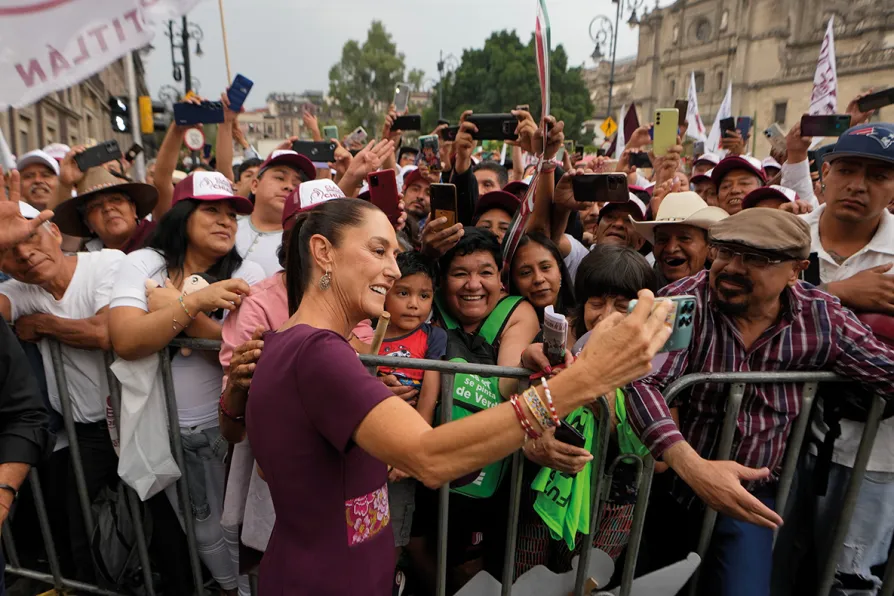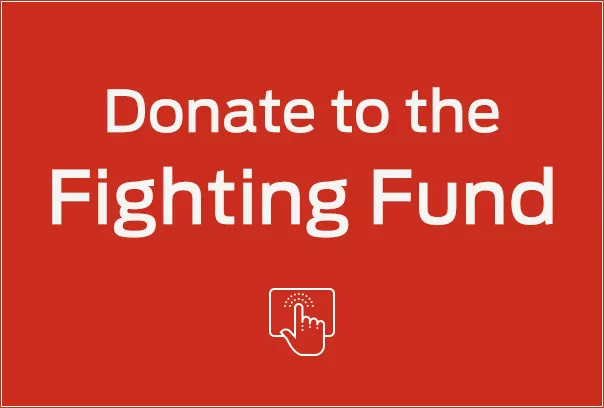SWEE ANG, the founder of Medical Aid for Palestinians, is a big believer in the power of small actions, and she is the living proof it works, writes Linda Pentz Gunter
JOHN PERRY, BECCA RENK and ROGER D HARRIS offer a corrective to the idea that Latin America still lags far behind the West on women’s rights by looking at the region’s significant feminist gains now stretching back decades

 Mexico's first woman president, Claudia Sheinbaum, celebrates her election victory with supporters
Mexico's first woman president, Claudia Sheinbaum, celebrates her election victory with supporters
MISOGYNY is “a very serious problem for Latin America,” reports the Guardian, reeling off the attacks on feminism by Argentina’s ultra-right president, Javier Milei. “Of course, Latin women continue to learn from those in the West,” it says, implying that benighted Latinas should take tips from their more enlightened Western sisters: “Women in Latin America need women in the West to work with us to put an end to this violent oppression.”
For the Washington Post, it’s Mexico that is a “bastion of machismo.” It marvels at how it got its first woman president, Claudia Sheinbaum, before the US. A “flurry” of misogyny greeted her election, claimed the Associated Press.
In a worldwide report on International Women’s Day, Al Jazeera highlighted Latin America as plagued by gendered violence and only then added: “In many European countries, women also protested against violence.”
But when the media focuses on “machismo” as a particular Latin American problem, it overlooks the region’s significant feminist gains.
In Mexico, feminists celebrated Sheinbaum’s electoral victory in June 2024. However, had she lost to the nearest runner-up, Xochitl Galvez, Mexico would still have had its first female head of state. Gender was simply not an issue in the contest. And in fact, women have held presidencies in several Latin American countries over the past half-century.
Mexico’s hosting of the UN World Conference on Women back in 1975 marked a significant moment for gender equality, producing a plan of action for reforms to combat discrimination against women.
Most Latin American countries have been influenced by the subsequent Convention on the Elimination of All Forms of Discrimination against Women, adopted in 1979 by the UN general assembly and adhered to by all of the Americas, with the notable exception of the US.
Mexico is already ahead of Britain, too, in many respects. It has already achieved gender parity in its national legislature, while the Westminster parliament achieved a record 40 per cent of female MPs in 2024.
Since 2014, Mexico has constitutionally mandated gender parity in candidacies for federal and local elections. On June 1, Mexico popularly elected five women and four men to the nine-person supreme court, while Britain’s equivalent has two female judges and 10 males.
Mexico is not alone in promoting electoral gender parity. Along with Mexico, the gender quota is 50 per cent in Bolivia, Costa Rica, Ecuador, Nicaragua, Peru, Panama and Venezuela. Honduras, El Salvador, Haiti, and Paraguay have lower quotas. However, lax enforcement and loopholes to circumvent them continue.
Cuba does not have mandatory statutory gender electoral quotas. Rather, the socialist country has a strong commitment to equity, where its Communist Party promotes women, youth, and racial minorities. Fully 56 per cent of its national assembly is composed of women.
A new chart from Latinometrics shows that Cuba, Nicaragua and Mexico are indeed the leaders in female parliamentary representation, not only regionally but globally. Latin America leads the world in female political representation.
In Nicaragua, “women are not fighting for space any more,” declares National Assembly Deputy Flor Avellan. “Now we have that space and we are empowered every day.” Just last year Nicaragua was judged by the World Economic Forum (WEF) to be sixth in its global index for closing the gender gap. This was the highest in the region (the WEF does not include Cuba) and was higher than many “developed” countries such as the US and Britain.
Since then, Nicaragua has taken a further step in creating a unique male-female co-presidency. Nevertheless, the 2025 gender gap index dropped Nicaragua from sixth to 18th.
This may be because bodies such as the WEF use first-world metrics. For example, firms with female majority ownership and female top managers are metrics, but there is none for women running their own businesses, let alone micro-businesses, which is Nicaragua’s strength.
Nicaragua is ranked first in parliament and in political institutions by the WEF, achieving parity between male and female representatives. The 2012 law requiring this was initially met with hostility from some men. But now it has become accepted as successful. “Having so many women in leading positions has changed the culture,” according to Nicaraguan feminist Abigail Espinoza.
Empowering women is seen not only in terms of political participation but as a multidimensional process to achieve societal change and improve women’s daily circumstances.
For example, over 23,400 small businesses have been formalised in 15 years, most owned by women; over 500 new women’s co-operatives have been formed. The “Zero Hunger” programme has significantly improved women’s earnings.
It provides livestock, seeds, fertilisers and building materials to women in rural areas, benefitting one in every six families and contributing to the nation’s food sovereignty (Nicaragua produces 90 per cent of the food it consumes).
In the field of health, maternal deaths have fallen by almost 80 per cent, while infant mortality dropped by 58 per cent between 2006 and 2024. Credit is due to a massive extension of health services, specifically, by the establishment of casas maternas, where women can go in the weeks prior to giving birth.
Violence against women remains a problem. But Nicaragua has reduced its incidence to the lowest in Central America, having established more than 400 women’s police commissions staffed by female officers (40 per cent of the national force).
The feminist movement in Nicaragua, mobilised mainly through the Sandinista National Liberation Front, is a class-based feminism that fights not only against patriarchy but also for an anti-imperialist and socialist class consciousness.
Nicaragua’s anti-poverty plan is fundamental to this goal. Backed by nearly 60 per cent of the national budget, it aims to establish women’s rights by guaranteeing access to free, quality education at all levels, access to healthcare, access to the means of production, and food security. Reducing poverty and inequality is seen as key to women’s empowerment.
Yet despite achievements, Latin America still has a long way to go. For instance, femicide, the intentional killing of women or girls because of their gender, is prevalent at “incredibly high rates” in Guatemala, El Salvador and Honduras.
It’s no coincidence that such violence is found where the US-backed dirty wars occurred in the 1980s, producing a culture of impunity. Conversely, revolutionary Cuba, followed by Chile and Nicaragua, has the lowest rates of femicide.
Progressive administrations in Mexico, Honduras, Cuba, Venezuela and Nicaragua have launched campaigns against machismo. Reactionary governments, such as in El Salvador and Argentina — both fully backed by the US — are dismantling feminist achievements.
This dynamic helps explain why Latin America’s feminist advances are often ignored by corporate media — or when acknowledged, reduced to the actions of individual leaders like President Sheinbaum. A broader social transformation is overlooked — one that challenges patriarchal norms and offers a model from which others might learn.
Roger D Harris is with the Task Force on the Americas and the US Peace Council. Becca Renkworks in sustainable community development with the Jubilee House Community co-ordinating the Casa Benjamin Linder solidarity project in Managua, Nicaragua. Nicaragua-based journalist John Perry writes for the London Review of Books, FAIR, and CovertAction.










